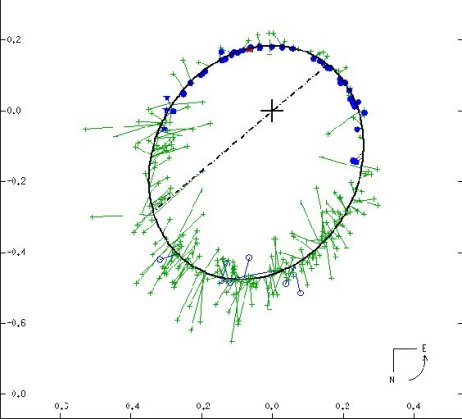
 |
The orbit of Phi UMa B, the fainter of the two class A3 subgiants, is plotted as if it is going around the brighter, Phi A (at the cross), every 105.4 years. In reality, each goes around a common center of mass that is close to midway between them. The arrow gives the direction of motion. The scales are in seconds of arc; note how close the stars are to each other. Though the orbital analysis gives an average separation of 54 Astronomical Units, it may be more like 40. Phi-A is not at the focus of the elliptical orbit because of a 25 degree tilt of the orbit to the plane of the sky. From the Sixth Catalog of Orbits of Visual Binary Stars , W. I. Hartkopf and B. D. Mason, US Naval Observatory Double Star Catalog, 2006. |